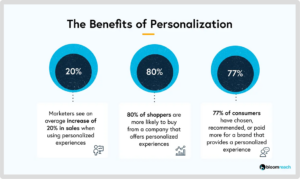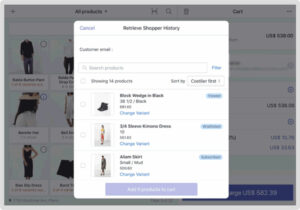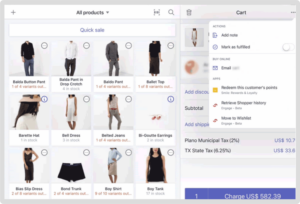Lazy Cart Syndrome: Why It Happens, and How to Recover Abandoned Carts
Shoppers adding items to cart but not purchasing? Solve this revenue challenge with abandoned cart recovery strategies that work.
If you’re seeing a growing trend of your customers adding items to their carts but never checking out, you’re experiencing ‘lazy cart syndrome’ in action. You likely track this as ‘cart abandonment’ or ‘dropped shopping carts’ on your dashboard (and don’t like the numbers you see).
So, what’s happening? There’s clear purchase intent from your customers, and the pricing seems to be right. Then why are more carts being abandoned? More importantly, how can you recover abandoned carts and get your revenue back on track?
Here’s the gist of the solution: simplify the purchase process, be transparent about any extra costs, and take buyer rationale into account.
8 reasons your cart abandonment rate is going up, and what you can do about it
Lazy cart syndrome is a misnomer for abandoned carts,really. The problem isn’t that your customers are lazy – it’s that your website/app’s purchase journey isn’t simple and/or transparent enough.
Here’s how this looks from your customers’ perspective.
1. ❝Why do I have to make an account to make this purchase?❞
Many shoppers are reluctant to make accounts on ecommerce sites before making a purchase. The reason? They’re either one-time buyers so don’t see value in creating an account, they don’t want marketing emails from the business, or they just simply don’t spend time filling out a form.
So, if you’re forcing shoppers to create an account as soon as they want to checkout, you’re looking at higher cart abandonment rates.
Solution: Here’s what you can do to remove forced account creation as an obstacle.
Apple offers a seamless guest checkout experience without forcing users to create an account and Apple ID immediately.
| ✅ | Offer a guest checkout option. If you need contact details, ask for this after the guest checkout has been completed. |
| ✅ | Make account creation simpler. Remove any fields that your marketing team doesn’t need. If you do want additional information, ask for it at a later stage once an account has already been created. |
| ✅ | Incentivize account completion. Offer the ability to track orders, avail discounts, access exclusive content, or any other benefit that makes users want to give you their details. |
Indian ecommerce company Nykaa incentivizes users to create an account with store wallet credits.
2. ❝These shipping and packaging costs are far too high.❞
Hidden costs can lead to almost half your shoppers abandoning their carts. This is because shoppers only expect to pay for what they see: the product.
So, when users see additional shipping and/or packaging costs, they’re more likely to abandon their carts. In fact, many shoppers add products to their cart just to see what the overall cost adds up to.
All of this can be a massive revenue leak for your ecommerce business.
Solution: Here’s what you can do to ensure shoppers don’t abandon carts due to unexpected costs.
| ✅ | Add extra costs to the product price. Include any additional costs and taxes in the displayed product price. You can even present this as “free shipping” to make purchase completion more lucrative. |
| ✅ | Show extra costs upfront. Show any additional shipping and packaging costs as well as the tax amount to be levied on your product and collections pages. Display the cost breakdown during checkout as well. |
| ✅ | Offer free shipping on select products. Market this free-shipping option on relevant product pages. You can also offer free shipping for products bought in combinations (if it gets you the right margins). |
| ✅ | Offer free shipping to exclusive members. In addition to reducing cart abandonment, this can also encourage non-members to sign up for your loyalty programs. |
3. ❝My preferred payment mode is unlisted, and I don’t trust this business with my card details.❞
More than 10% of all abandoned carts are because shoppers can’t find their preferred payment method. An additional 19% abandon their shopping journey when a business asks for card information without any trust signals.
Solution: Here’s how you give shoppers payment flexibility and build trust.
| ✅ | Offer more payment options. Don’t restrict users to credit and debit cards. Look into offering PayPal, Google Pay, Apple Pay, and e-wallets as payment options. Prioritize major payment options first. |
| ✅ | Add trust signals. If you’re asking for card details and offering to save these details for future use, briefly mention that you’re compliant with data privacy and safety standards (e.g., PCI DSS) and display trust badges. |
4. ❝This checkout process is too complex.❞
Online shoppers are typically short on patience but not short on alternatives. This means long, complicated checkout and payment processes can single-handedly take your cart abandonment rates off the charts.
Solution: Here’s how you simplify and optimize your payments and checkout process.
Fashion and accessories brand Sew Trendy offers easy payment options for guest users.
| ✅ | Make payment details saveable. Additionally, consider offering a card reader for quick field mapping. This can speed up the checkout process and reduce cart abandonment opportunities. |
| ✅ | Reduce payment steps. Audit your existing checkout flow and remove unnecessary steps and data entry from the process. Additionally, consider purchasing a Secure Socket Layer (SSL) certificate to prevent redirecting users to third-party platforms/apps. |
| ✅ | Add auto-fill capabilities. This saves shoppers from repeatedly filling contact, shipping, and payment details on your platform, speeds up checkout, and significantly enhances checkout experiences. |
| ✅ | Remove distractions. Get rid of big headers, unnecessary text, large images, or anything else that distracts attention from the payment process. |
| ✅ | Offer payment in native currencies. This saves international shoppers from taking extra steps to convert currencies and reduces payment friction (that can easily translate into abandoned carts). |
5. ❝It’ll take too long to deliver my order. I need it sooner.❞
Slow shipping and/or limited shipping options could be a big reason shoppers abandon carts on your platform. Some of the biggest e-retailers and marketplaces offer same-day delivery options, and users expect the same speed from you, too.
Solution: At this point, you may not be in a position to optimize or scale up your supply chain to match the Amazons and Walmarts of the world. But you can adopt other clever fixes to speed up delivery and set the right expectations.
Sew Trendy offers multiple shipping options to customers to reduce cart abandonment.
| ✅ | Give multiple shipping options. Allow shoppers to personalize delivery times and choose from multiple delivery providers. Further, add ‘delivery time’ as a search filter to set the right expectations and deliver better experiences. |
| ✅ | Give options for physical pick-up. If you have a brick-and-mortar store or are collaborating with vendors, Buy-Online-Pickup-In-Store (BOPIS) is a great way to deliver orders faster, cut down on shipping costs, and reduce overall cart abandonment rates. |
6. ❝I’m not happy with the return and refund policy.❞
Unsatisfactory return, refund, and exchange policies could be a big reason behind skyrocketing cart abandonment rates, especially if you’re an e-retailer in the fashion and beauty or consumer electronics sector.
If users feel they’re trapped with a product once they buy it, they’re likely to abandon their cart and look for other options.
Solution: You can reduce cart abandonment by making your return/exchange policies more transparent and flexible.
Apparel company Lane 201 shares all crucial returns/exchange details right on its product pages.
| ✅ | Make your policy easy to find. Include this information in your product and collections pages, help center, FAQs, website footer, and all high-visibility areas across platforms. |
| ✅ | Don’t force refunds to your store wallet. Give users a clear option for refund credit to their original payment source. Forcing shoppers to take store credit can be a big turn-off, leading to abandoned checkouts. |
| ✅ | Communicate return/exchange instructions clearly. Ensure that return/exchange deadlines are clear, clauses around offers and promotions are easy to understand, criteria for acceptable item conditions are specified, and refund processes are crystal clear. |
| ✅ | Keep up with best practices. Regularly check what policies your competitors and industry leaders offer, and consider adapting your policies. |
7. ❝The website/app is a pain to use. I’ll look elsewhere.❞
Poor user experience and slow page-load times contribute significantly to high cart abandonment rates, but too many ecommerce businesses don’t prioritize fixing this.
Bad navigability, low-res images, shoddy website design and structure, poor interlinking, frequent 404s, unclear or illegible buttons, obnoxious pop-ups, broken search, or even just badly written product descriptions are all signs of poor usability that eventually translate into abandoned carts and frustrating shopping experiences.
Solution: Make the shopping experience better.
Lane 201 offers easy wishlisting options with Swym, even for guest users!
| ✅ | Make shopping easier with wishlists. One of the biggest gripes shoppers have with ecommerce platforms is the inability to save items that aren’t in stock/want to be purchased later. To improve shopping experiences, add a ‘wishlist’ option to your platform, data from which can also help you run better cart abandonment and browse abandonment recovery campaigns. |
| ✅ | Optimize your site for mobile. More than 85% of mobile users abandon their carts. Solve this with responsive design and content optimized for mobile users. |
| ✅ | Invest in performance. Servers with fragile processing capacities can crumble under peak traffic, especially on high-volume pages like your checkout page. If performance is a recurring issue and quick fixes aren’t helping, consider shifting to a better cloud-hosted solution. |
| ✅ | Improve website/app UX. Map the ideal buyer journey, run a deep UX audit, analyze heatmaps, and bring in specialists to fill in the gaps or overhaul the entire platform. |
8. ❝I forgot that I have things in my cart.❞
Sometimes, shoppers simply forget that they’d initiated a purchase process on your platform. This is more likely to happen for first-time buyers comparing prices across platforms.
This is still an optimization problem, though — it means you’re not triggering reminders at the right time and/or the right channels to bring shoppers back to their carts.
Solution: To reduce cart abandonment, take an omnichannel approach to trigger automated purchase reminders.
Indian ecommerce giant Flipkart keeps it simple with its automated cart reminder emails.
| ✅ | Send automated emails. Set up automated email cadences for repeated (but not annoying) purchase reminders. Ensure that every email is personalized to a shopper, and minimize decision-making with a simple layout and a clear call-to-action. |
| ✅ | Send automated app notifications. Use your app dashboard to set up automated notifications, configured to trigger soon after a user has abandoned their cart. Invest in a good copywriter for crisp yet effective communication. |
| ✅ | Send abandoned cart messages. But keep in mind that abandoned cart SMS charges can quickly add up and further reduce your profitability. So run these campaigns primarily for high-intent shoppers. |
| ✅ | Run remarketing campaigns. Create dynamic lists of shoppers who’ve abandoned carts, and run remarketing campaigns on social media and search. |
| ✅ | Experiment with exit-intent pop-ups. A/B test with different copy, design, triggers, call-to-action buttons, and audience segments to see which abandoned cart pop-up works best. |
Don’t forget about abandoned browsing
Cart abandonment is just one-half of the puzzle you need to solve. The other half is abandoned browsing: shoppers are viewing many products but adding none to their carts.
This is arguably a more important challenge to solve since your abandoned cart strategy falls flat if there’s nothing in your shoppers’ carts.
Here’s how you can not only reduce abandoned browsing on your ecommerce platform but bring back customers to continue their product discovery and shopping journey.
Back-in-stock messaging like this is a great way to bring users back to your platform.
| ✅ | Enable targeted messaging |
| Bringing customers back to their abandoned browsing session means being able to resonate with them. That might sound challenging, given the volume and versatility of your target audience. However, you have all the data you need to sound relevant when you talk to users about items they are actually interested in with Swym’s Wishlist Plus. Imagine a customer who has added an item to their wishlist to “think over it”. They might think they have unlimited time to consider the item, but will feel a sense of urgency when they receive a Low Stock Alert. Similarly, they might be nudged towards a positive purchase decision when they receive a Price Drop Alert or a Back in Stock alert. And all these types of alerts can be triggered to go out automatically via Wishlist Plus | |
| ✅ | Allow users to ‘save for later’ |
| Give users the ability to add preferred products to a ‘save for later’ or ‘favorites’ list. Not only does this give users the convenience of picking up where they left off, but you can also understand user preferences and personalize marketing outreach. This is possible, again, with Swym’s Wishlist Plus! | |
| ✅ | Prioritize ease of use |
| Drive effortlessness to your shoppers’ experience with features like wishlists (that make it easy for them to remember what they liked) and quick view options. | |
| ✅ | Display relevant product recommendations |
| In the world of ecommerce, enhancing product discovery is critical. You can drive intent and action by showcasing relevant products tailored around customers’ past interactions and purchases. It’s fairly easy because recommendation engines are available to facilitate this personalized approach. Pro-tip: With Swym, you can make personalized product suggestions to your ‘out-of-stock’ pages to reduce browse abandonment. This is a prime location on your platform for product recommendations and an opportunity to deliver better experiences. You can also utilize the data you get from Swym to disseminate personalized communication with recommendations around out-of-stock and wishlisted items. | |
| ✅ | Nudge with email, messages and push notifications |
| All that abandoned browsing data is gold in terms of customer data. Tap into it to send automated nudges to shoppers who abandoned browsing on your platform. These notifications—that can be disseminated via email, whatsapp, SMS, push notifications and other mediums—can include personalized product recommendations, discounts or promo codes, top-selling product recommendations, etc. The best way to automatically make personalized suggestions is with shopping wishlist data, which indicates browsing interest. This is easy to do with Swym, which integrates wishlist data with your marketing tools for enhanced browse abandonment recovery. |
It’s all about making decisioning as simple and stress-free as possible
In most cases, cart abandonment or lazy cart syndrome boils down to the fact that people hate making decisions, especially those that involve transactions. Plus, Amazon has set a pretty high bar for customer experience, so users expect a certain level of seamlessness in the purchase process.
All of this means that your abandoned cart recovery strategy has to be centered around minimizing friction at every step of the purchase journey.
Simplify everything: offer guest checkout, give more payment options, be upfront about extra costs, and make your app and website extremely easy to use. Additionally, keep an eye out for how competitors are pricing their products.
It also helps to build trust signals, e.g., if you’re asking users to give their card details, it’s vital to display that you’re compliant with data protection standards.
But most importantly — trigger reminders at the right time and on the right channels. Think of abandoned carts and abandoned browsing not as lost revenue but as one more step in converting high-intent shoppers.
Questions we get often
Absolutely. Two reasons for this.
1. Fewer carts abandoned equals more checkouts completed, which means more revenue for you. Plus, you prevent losing business to competitors.
2. Abandoned cart recovery strategies help you identify reasons for lower sales. E.g., if your tactic of offering free shipping leads to more checkouts, the insight is that your shipping costs may be too high for some customers (especially if you offer international shipping).
– Forced account creation
– Unexpected or hidden extra costs
– Long and complex checkout processes
– Unsatisfactory refund, returns, and exchange policies
– Poor website/app usability or server performance
– Preferred payment options not listed
– Users unwilling to trust retailers with card details
– Delivery slower than needed
The average cart abandonment rate is around 70%. This is a massive challenge that e-retailers can overcome by executing well-thought-out recovery strategies.
Probably because:
– You haven’t been upfront about extra costs, and users are surprised to see additional costs added to the retail price.
– Your checkout process is too long and complex.
– Your competitors offer discounts and promo codes, but you don’t.
– Users have payment security concerns.
– Your current server capacity is not enough to handle high-volume pages like checkout and payment, leading to slow performance.
– Users can’t find their preferred payment method.
– Users are finding better deals elsewhere, more often.





